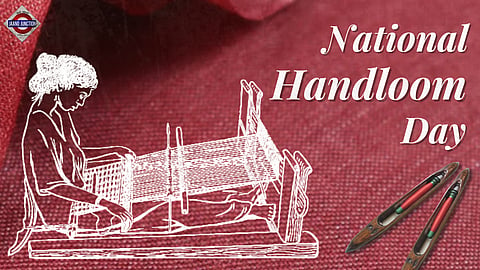

Every year on August 7th, India celebrates National Handloom Day in appreciation of the country's handloom weavers. The handloom is a representation of our illustrious cultural heritage and a significant source of income. The day also emphasises how the handloom sector helped the nation's socioeconomic development and raised weavers' incomes.
The Swadeshi struggle, which began on August 7, 1905 as a component of the Indian independence struggle, was significant for the handloom industry. The initiative was created to increase home output and reduce reliance on imports.
Almost every home began making khadi as a result of the initiative. At Princess Park near India Gate, Pandit Jawaharlal Nehru raised the khadi-made Indian flag to commemorate the country's "at the stroke of midnight hour" independence.
The Swadeshi Movement was founded on August 7, which is why that day is recognised as National Handloom Day. The first National Handloom Day was launched and observed by the Indian government on August 7, 2015, in Chennai.
According to a survey by the Indian Brand Equity Foundation, the Indian handloom industry sells its goods to more than 20 nations around the world, including the USA, UK, Germany, France, and South Africa.
The National Handloom Day is observed to honour the community of handloom weavers and to emphasise their contributions to the nation's numerous industries, especially rural employment. The day also promotes the preservation of India's rich handicraft legacy and the provision of greater and better opportunities for the handicraft community.
